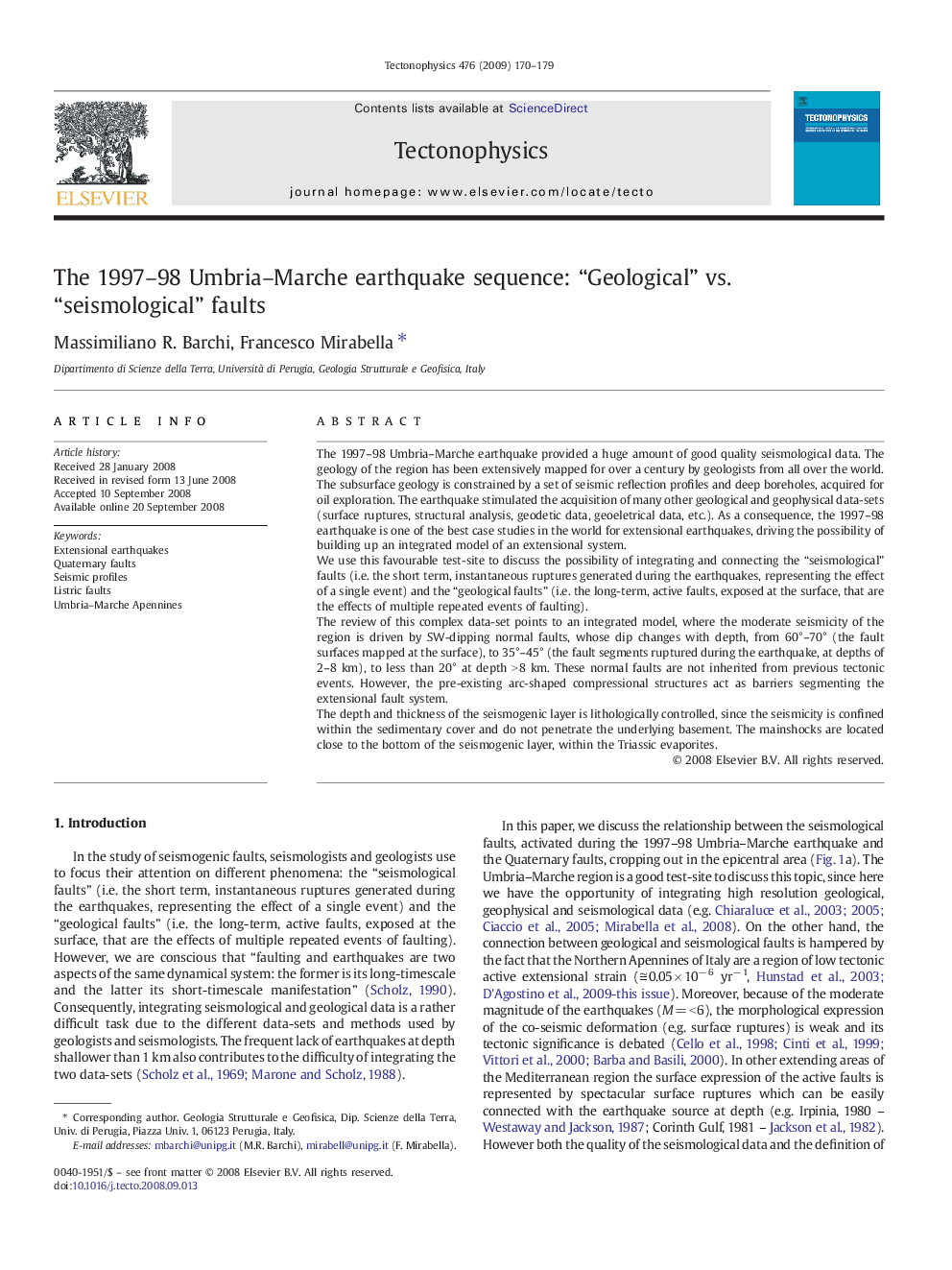| کد مقاله | کد نشریه | سال انتشار | مقاله انگلیسی | نسخه تمام متن |
|---|---|---|---|---|
| 4694029 | 1636884 | 2009 | 10 صفحه PDF | دانلود رایگان |

The 1997–98 Umbria–Marche earthquake provided a huge amount of good quality seismological data. The geology of the region has been extensively mapped for over a century by geologists from all over the world. The subsurface geology is constrained by a set of seismic reflection profiles and deep boreholes, acquired for oil exploration. The earthquake stimulated the acquisition of many other geological and geophysical data-sets (surface ruptures, structural analysis, geodetic data, geoeletrical data, etc.). As a consequence, the 1997–98 earthquake is one of the best case studies in the world for extensional earthquakes, driving the possibility of building up an integrated model of an extensional system.We use this favourable test-site to discuss the possibility of integrating and connecting the “seismological” faults (i.e. the short term, instantaneous ruptures generated during the earthquakes, representing the effect of a single event) and the “geological faults” (i.e. the long-term, active faults, exposed at the surface, that are the effects of multiple repeated events of faulting).The review of this complex data-set points to an integrated model, where the moderate seismicity of the region is driven by SW-dipping normal faults, whose dip changes with depth, from 60°–70° (the fault surfaces mapped at the surface), to 35°–45° (the fault segments ruptured during the earthquake, at depths of 2–8 km), to less than 20° at depth > 8 km. These normal faults are not inherited from previous tectonic events. However, the pre-existing arc-shaped compressional structures act as barriers segmenting the extensional fault system.The depth and thickness of the seismogenic layer is lithologically controlled, since the seismicity is confined within the sedimentary cover and do not penetrate the underlying basement. The mainshocks are located close to the bottom of the seismogenic layer, within the Triassic evaporites.
Journal: Tectonophysics - Volume 476, Issues 1–2, 15 October 2009, Pages 170–179